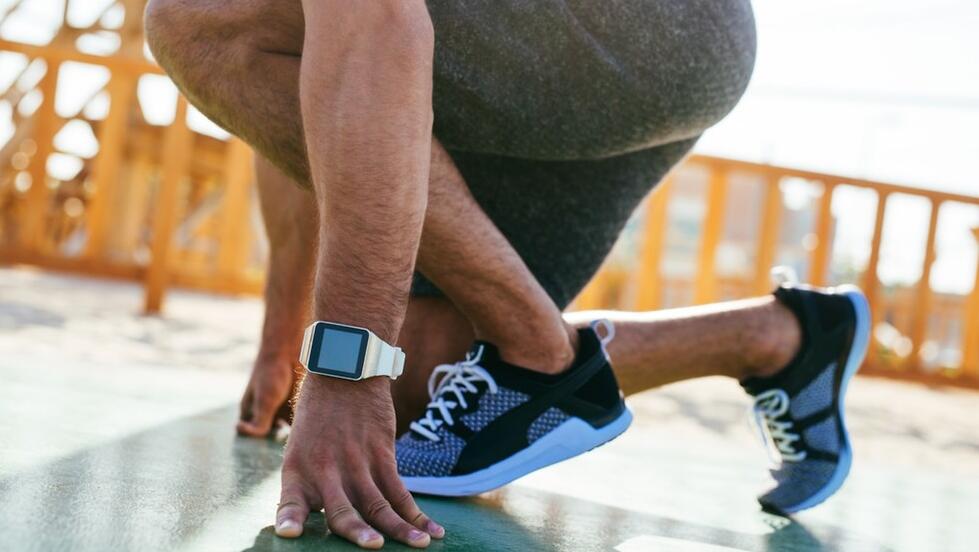Getting your Trinity Audio player ready...
Most of us are familiar with the feeling: we’ve just completed an intense physical workout, whether it’s our routine or a new exercise, and while we enjoyed the activity, got tired, and even managed to fall asleep easily, the next morning we woke up with disturbing muscle soreness that limited us for a few days in walking and performing simple routine activities. In other words - “pulled muscles”. What causes this? Is the soreness related to the lactic acid produced during intense physical activity? And more importantly, can we find ways to alleviate the discomfort?
Read more:
The human body is an intricate machine composed of various systems, one of which is the sensory or nervous system. Among its many roles, this system is a control mechanism that alerts us to potential danger or harm to our organs. It transmits real-time information to the brain about sensations throughout the body, including pain. Pain is an unpleasant sensation that compels us to direct our attention toward the aching area and motivates us to seek solutions. A common example of this is muscle soreness experienced after exercise.
Delayed Onset Muscle Soreness
Delayed onset muscle soreness (DOMS) occurs after unusual or particularly strenuous physical exertion when muscles are pushed to perform at an intensity beyond their usual capacity. The soreness typically becomes noticeable 12 to 24 hours post-exercise, peaks within 24 to 72 hours, and subsides gradually over about a week. The intensity of DOMS can vary from slight aches to severe stiffness that is accompanied by swelling and weakness, and sometimes even restricted joint movement.
While most muscle pains do not pose a health hazard, extensive muscle activity can lead to Rhabdomyolysis (commonly known as Rhabdo). This rare condition involves the breakdown of muscle cell membranes to a degree that exceeds normal muscle breakdown, leading to the release of muscle cell contents. This process can result in overall weakness, loss of consciousness, and potentially kidney damage, mainly due to excessive and uncontrolled leakage of a protein known as myoglobin into the bloodstream.
A Myth Named Lactic Acid
A prevalent but mistaken assumption regarding the cause of post-exercise muscle soreness is that it is caused by a buildup of lactic acid in the muscles. This misconception is still held by many trainers. However, during periods of physical exertion, muscle cells derive energy primarily from glucose, a form of sugar. When the body is deprived of oxygen, as is the case during strenuous activity, it switches from using oxygen (aerobic cellular respiration) to producing energy without oxygen (anaerobic respiration), a process that leads to the production of lactic acid. However, lactic acid is quickly transported to the liver where it is recycled. This process typically occurs about one hour after exercising, which means that it does not accumulate in the muscles for an extended period and thus cannot be held responsible for delayed onset muscle soreness, which manifests many hours later.
The sensation of fatigue and heat in the muscles during exercise is not caused by lactic acid buildup either. Instead, they are caused by the accumulation of hydrogen and phosphate ions, which are byproducts of the muscle's activity.
And so, what is the true cause of the delayed soreness experienced after strenuous exercising?
Microscopic Muscle Tears
When muscles contract under a significantly higher strain load than usual, small tears, commonly referred to as micro-tears, occur in the muscle fibers. If a person who is not accustomed to running starts running without training gradually, they will exert their leg muscles with a strain that is higher than the threshold they are accustomed to, causing the overexerted muscle fibers to rupture due to an inability to withstand the load.
Subsequently, local inflammation develops and pain-mediating substances are released, activating pain receptors and causing delayed muscle soreness. It seems that in this manner the nervous system signals us to reduce the load and rest, to allow the muscle to recover and for the inflammation to subside. Nevertheless, this process, in which muscle fibers endure significant loads, become injured and then recover, is necessary, as it allows the muscle to thicken, strengthen, and develop the ability to handle heavier loads.
How the muscle contracts also affects the degree of strain applied to it, and consequently, the frequency of pain occurrence. When weights are lifted using the biceps and pulled close to the body, it is a concentric contraction in which the muscle shortens. However, if we reverse the direction of the exercise - starting from a closed joint and contracted muscle and slowly straightening the arm - the biceps will elongate while exerting considerable force. This is an eccentric contraction in which the muscle elongates as it is activated, involving fewer muscle fibers in lifting the same weight. Thus, an increased load is applied to the muscle, compared to concentric contraction, and this increased load increases the risk of micro-tears, and consequently - delayed onset muscle soreness.
Is Stretching Important?
Many trainers perform stretches as part of their training routines before and after workouts, to prevent “pulled” muscles. But does stretching after exercise help in relieving the soreness that develops the day after a workout? Most studies indicate that stretching does not reduce post-workout delayed onset muscle soreness and stiffness, and in certain types of exercises, it might increase them. Regardless, stretching performed after the muscles are warmed up, under proper guidance and over time, can contribute to improved flexibility, reduce the risk of injuries, and enhance the range of motion of the joints, and is therefore highly recommended.
What Can Minimize the Duration and Intensity of Muscle Soreness?
Delayed onset muscle soreness naturally diminishes over time. After the soreness reaches its peak, the inflammatory response subsides and the injured muscle undergoes a process of recovery, resulting in a reduction in the intensity of pain. But what about massages? Studies have demonstrated that muscle massages are one of the most effective methods for expediting recovery from soreness and alleviating pain intensity and associated symptoms, such as stiffness and muscle fatigue following exercise. The researchers attribute this reduction in pain to a decrease in inflammatory markers and the concentration of proteins indicative of muscle breakdown. Individuals who received a massage typically experienced a more significant reduction in these markers and concentrations, compared to those who have not.
Engaging in sports is beneficial for your health, and to avoid sore and pulled muscles, and even injuries, it is important to match the type of physical activity and its intensity to one’s capabilities. While stretching may not necessarily prevent injuries, it does offer other valuable benefits. And finally, muscle massage is not just a luxury, i




